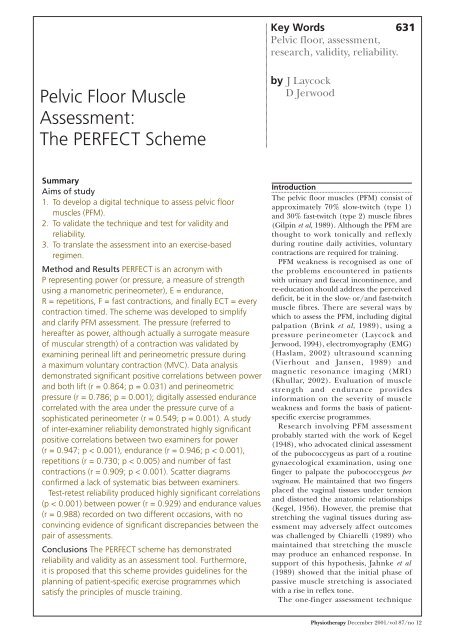A digital test of pelvic muscle strength for evaluation of a pelvic muscle exercise pme program was developed with a sample of 338 incontinent women living at home.
Brink scale pelvic floor strength.
We prospectively studied 150 healthy multiparous women.
We prospectively studied 150 healthy multiparous women.
Brink scale measures pelvic floor muscle pfm strength force generating capacity which is related to patient characteristics lower urinary tract symptoms and fecal incontinence symptoms.
Brink scale considers 3 dimensions to assess pelvic floor muscle contraction the compression pressure to feel.
The purpose of this study was to describe how clinical pelvic floor muscle pfm strength force generating capacity is related to patient characteristics lower urinary tract symptoms and fecal incontinence symptoms.
Demographic and pelvic floor symptoms were asse.
Title pelvic floor strength in women with incontinence as assessed by the brink scale abstract background and purpose.
Pelvic floor muscle strength was determined through transvaginal digital palpation during the performance of a voluntary pfm contraction and rated using the brink scoring system 19 which has been reported to yield scores with reasonable interrater reliability test retest reliability and validity.
1 to examine the pelvic floor muscle pfm function using the brink scale and 2 to investigate the correlation between potential factors and pfm function.
The aim of this study was to compare pelvic floor muscle pfm strength using transvaginal digital palpation in healthy continent women in different age groups and to compare the inter and intra rater reliability of examiners performing anterior and posterior vaginal assessments.
The aim of this study was to compare pelvic floor muscle pfm strength using transvaginal digital palpation in healthy continent women in different age groups and to compare the inter and intra rater reliability of examiners performing anterior and posterior vaginal assessments.
This method can measure strength and endurance of the pelvic floor muscles.
They were distributed into four different groups.
The brink scale is a commonly used digital assessment of pelvic floor muscle strength.
They were distributed into four different groups.
Moreover a previous study demonstrates a strong correlation between perineometer evaluations and.
Urinary incontinence ui in women is common and prevalence increases with age 1 2 damage to the pelvic floor muscle pfm can decrease the muscle strength and consequently could result in urinary and fecal incontinence it has been demonstrated that the weakness of the pfm is significantly higher in incontinent women 3 4 and also that this weakness is worse in women with.
Test retest for the anteroposterior score was r 65 p less than 01 with interrater.
From january 2011 and december 2014 women with at least one pelvic floor symptom attending the urogynecology clinic were included in a medical record review.
The peritron perineometer a compressible vaginal insert that records pressure in centimeters of water offers an objective method for this evaluation.






























